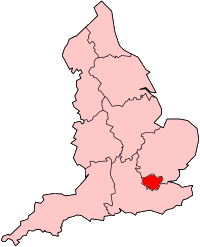| SELCHP | |
|---|---|
 The SELCHP Plant in 2007 | |
 | |
| Official name | South East London Combined Heat and Power Plant |
| Country | England |
| Location | Greater London |
| Coordinates | 51°29′08″N0°02′54″W / 51.4856°N 0.0484°W |
| Commission date | 1994 |
| Operator | Onyx SELCHP |
| Thermal power station | |
| Primary fuel | Waste |
| External links | |
| Commons | Related media on Commons |
grid reference TQ356781 | |
South East London Combined Heat and Power, better known as SELCHP, is a major energy from waste incineration plant in Bermondsey, London. It was designed to generate both heat and electricity. The plant can generate up to 35 MegaWatts of power using a steam turbine in electricity only mode. [1] It can incinerate up to 420,000 tonnes per year of municipal solid waste.
